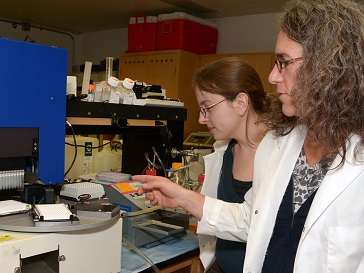New chemicals screening initiative launched to identify breast carcinogens
 In the past, consumers rarely questioned the chemical safety of the products they purchased. If it was on the store shelf, it must be safe. However, with the number of alarming reports of toxic chemicals cropping up in products such as cosmetics, toys, food packaging, and clothing—everyday essentials that we take for granted—that perception of safety is eroding. Increasingly, consumers have begun demanding safer products, devoid of harmful substances.
In the past, consumers rarely questioned the chemical safety of the products they purchased. If it was on the store shelf, it must be safe. However, with the number of alarming reports of toxic chemicals cropping up in products such as cosmetics, toys, food packaging, and clothing—everyday essentials that we take for granted—that perception of safety is eroding. Increasingly, consumers have begun demanding safer products, devoid of harmful substances.
Unfortunately, there are thousands of different chemicals on the market. The vast majority of them have never been safety tested because of inadequate regulations and lack of cost-effective tools for screening chemicals. With almost no long-term toxicity data for most of the chemicals in use, protecting consumers from exposure to potentially harmful products has presented an enormous challenge.
To address this issue, Silent Spring Institute has embarked on a new research effort to develop ultra-fast chemical screening tools that will allow researchers to test hundreds of chemicals at once and zero in on those most likely to increase breast cancer risk. This high throughput screening technology will help government agencies regulate chemicals more effectively and assist companies in developing greener products.
With $1.29 million in funding from the California Breast Cancer Research Program, the three-year Chemicals and Breast Cancer: Building on National Initiatives for Chemical Safety Screening project brings together researchers from Silent Spring Institute, the University of California, Berkeley, Lawrence Berkeley National Laboratory, and the U.S. Environmental Protection Agency. The project also draws on expertise from two federal high throughput screening initiatives currently underway: the EPA’s ToxCastproject and the National Toxicology Program’s Tox21 project.
Conventional toxicological screens are time-consuming and expensive because they rely on animal testing. In contrast, high throughput screening uses an automated approach—a complex system of robots, cameras, and computer software—to test large numbers of chemicals on human cells. With high throughput screening, researchers can perform hundreds, even thousands of experiments in a matter of hours, instead of the years it would take using traditional screening tools.
Pharmaceutical companies have used high throughput screening for years to sift through vast libraries of molecules for potential drug compounds. Recently, toxicologists have adopted the technology in search of quick and accurate ways of predicting the toxicity of chemicals. However, so far these screens have relied primarily on human liver, kidney, and lung cells and therefore may say little about the effects of chemicals on breast cancer.
To fill that gap, Silent Spring Institute and their collaborators are designing high throughput toxicity screens using breast cells. The idea is to expose the cells to different chemicals and look for specific disruptions such as DNA damage, increased estrogen receptor activity, or changes in the expression of genes involved in breast development and tumor growth. By comparing the effects of chemicals that are already known breast carcinogens with those that do not cause breast cancer, the scientists hope to identify molecular changes in the cells that predict increased breast cancer risk.
With these molecular signatures of toxicity, the scientists can then apply their new tests to screening large numbers of chemicals of unknown toxicity and determine which ones are most likely to lead to tumors. This will enable scientists to focus more of their time and energy investigating the real chemical culprits in breast cancer.
Not only will these novel screening tools dramatically quicken the pace of research on the role of chemicals in breast cancer, but also data derived from these screens could be used as a basis for precautionary action. A complete and publicly available list of suspect chemicals could help companies decide which chemicals to avoid or eliminate from their products and empower consumers to make smarter choices.
View the official abstract for Silent Spring Institute high throughput screening project on the California Breast Cancer Research Program webpage here.